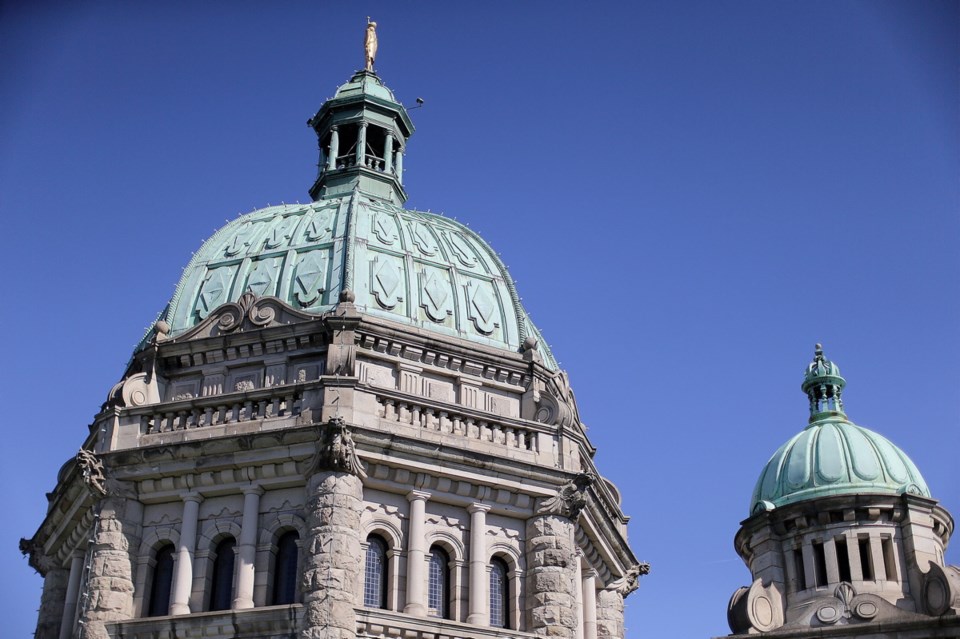The NDP government is going to continue responding to the pandemic the only way it knows how, by spending as much money as it can to help people through it.
That’s been the automatic response in most of the world. It’s undeniably effective, and an overwhelmingly popular approach. So Finance Minister Carole James committed Tuesday to carrying on. But her fiscal update vividly illustrated what the government is up against.
Her February budget was balanced, with a few hundred million in reserve.
The new estimate is a deficit this year of $12.5 billion, the biggest ever, and one that developed almost instantly.
That’s not a forecast. The situation is so wildly unpredictable they’ve give up doing forecasts. They’re just “scenarios” now. So it could go higher.
As James said: “That's why we've developed a scenario, rather than a typical forecast, because of the unprecedented nature of COVID-19 and the uncertainty regarding the magnitude of the economic decline caused by the pandemic.”
She’s acknowledged there will be deficits for at least the next three years. But it’s more likely to be a decade or more.
(Two years ago officials marked the elimination of just one component of sa���ʴ�ý’s debt, the operating debt stemming mostly from accumulated deficits. It took 40 years to accomplish that.)
The federal government did a similar update last week. Its projected deficit of $34 billion has jumped to $343 billion because of the pandemic.
So the on-going federal-provincial plan to keep helping people is based on borrowing more and more money to pay for it.
Rock-bottom interest rates will ease some concern about the hole they’re digging.
And there are projections that the economic collapse will only last for a year. So an optimistic outlook would be a one-year catastrophe followed by a bounce back in 2021, followed by years of whittling deficits back down to size.
Government finances obviously depend entirely on the private sector economy. James’ briefing included an exhaustive list of crises in different sectors.
Roughly half the new deficit is the new spending to help people cope ($5 billion in direct aid, $1.3 billion in deferred taxes and extensions). The other half arises from a collapse in government revenues.
There is a billion less in personal income tax, another billion less in corporate income tax and $1.3 billion less in sales tax, as examples. That’s all due to retail sales dropping 24 per cent, home sales down 45 per cent, 235,000 fewer jobs, corporate profits down 36 per cent and a seven to eight per cent drop in the provincial GDP, all in the last five months.
“No one has a playbook for dealing with this,” James said. So the plan they’ve fashioned is based on the fervent hope this is a one-year nightmare.
She has plans to announce a “recovery plan framework” in September, which would outline the expectations for how $1.5 billion in stimulus spending might be used.
But all the “scenarios” depend on the COVID-19 daily counts. Any sustained increases or outbreaks could delay recovery plans. That would make economic calamity even grimmer and more protracted than it already is.
Whatever the virus does in the next while, COVID-19 will be around for years as an economic factor.
Just So You Know: James spent 60 minutes detailing the extent of the economic catastrophe. She ran through 24 slides showing devastating impacts on every single aspect of the economy.
But the official news release covering her update was a study in deliriously-upbeat positivity. It was headed: “sa���ʴ�ý’s strong fiscal response, economic foundation support people.”
It rehashed all the previous good news announcements, ignored all the alarms and buried the stunning news there “could be” a $12.5 billion deficit.
It’s probably a firing offence for communications staff to write anything that leaves a negative impression in these sorts of releases.
But in a world where governments are spending more than ever, getting their own news out and covering themselves on all platforms as they see fit, the release is a reminder: It’s good to get an independent view.



